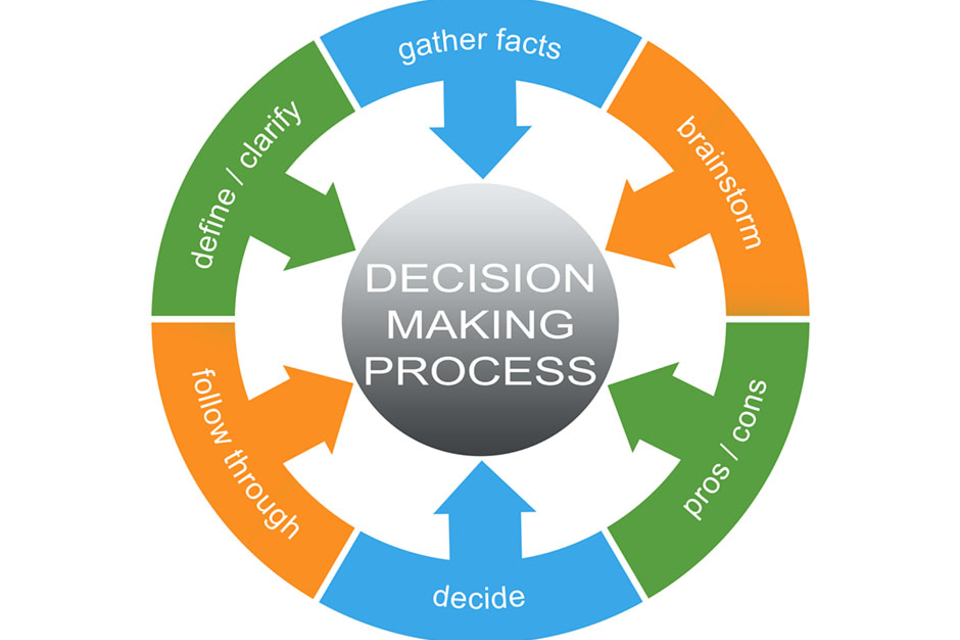The Family Test
Updated 26 May 2021
Introduction
1. The government recognises the importance of safe, secure and nurturing relationships to the quality and enjoyment of peoples’ everyday lives. Healthy and strong family relationships are also recognised as an important component of individual, community and national wellbeing.
2. Evidence shows family relationships, in all their forms, have a major impact on the life chances of individuals from all backgrounds and circumstances. This includes their education, employment, health and housing. Strong families and healthy relationships can therefore help government departments to deliver their objectives.
3. The Family Test brings a family perspective into policy making. It helps ensure impacts on family relationships and functioning, both positive and negative, are recognised in the process of policy development and help inform the policy decisions made by Ministers.
4. This refreshed guidance has been issued following a review undertaken by the Department for Work and Pensions (DWP) in 2018 to 2019, designed to improve cross-government implementation of the Family Test. The test itself remains unchanged. The guidance has been updated in response to user feedback, which was gathered through an extensive engagement programme with a variety of government professions involved in policy making.

" "
5. As government develops wide-ranging policies to improve lives, we must not underestimate the potential impact on family relationships and functioning. While supporting families is an explicit goal of some public policy, and implicit in other areas, across government as a whole, policy that supports or inadvertently impacts on strong family relationships is not always anticipated or well understood.
6. The Family Test incorporates an explicit family perspective to the domestic policy-making process that should be considered for both single departmental led policies and for policies developed between departments.
The focus and scope of the Family Test

" "
7. Families come in many shapes and sizes, with multiple family relationships, so the scope of the Family Test is therefore broad. The Family Test consists of five questions developed in conjunction with representatives of the Relationship Alliance[footnote 1]. It aims to help policy makers think about how new and changed policy might impact upon family life and family relationships.
- What kinds of impact might the policy have on family formation?
- What kind of impact will the policy have on families going through key transitions such as becoming parents, getting married, fostering or adopting, bereavement, redundancy, new caring responsibilities or the onset of a long-term health condition?
- What impacts will the policy have on all family members’ ability to play a full role in family life, including with respect to parenting and other caring responsibilities?
- How does the policy impact families before, during and after couple separation?
- How does the policy impact those families most at risk of deterioration of relationship quality and breakdown?
8. Not every policy change will have a family impact, but the indirect and consequential policy impacts on families are not always immediately apparent. Departments are encouraged to develop their own supplementary guidance or products, which should be tailored to the context and likely policy challenges in their own departments. We recommend policy makers read this guidance, alongside any supplementary guidance developed in their own departments.
9. Additionally, policy makers may find it useful to consider the Family Test in parallel with other equality assessments, for example Public Sector Equality Duty (PSED). These other equality assessments are focused on assessing impacts on the individual with the protected characteristic – and like the Family Test, should be considered early in the development of new or changing policy. The Family Test requires a different perspective of considering the citizen impacted by the policy in the context of their family connections and relationships. Further prompts to help policy makers think through the Family Test questions can be found here.
10. There isn’t a standard government definition of a family. As the list below illustrates, there are a range of family relationships that would be covered by the test, so this list is not exhaustive.
- couple relationships (including same-sex couples), married partners, civil partnerships, co-habitees and those living apart together (2 partners who regard themselves as a couple but are not co-habiting)
- relationships in separated families, including between children and any parent they may no longer reside with, as well as relationships with extended family, especially grandparents
- parent and step-parent to child relationships
- relationships with foster children and adopted children
- sibling relationships
- children’s relationship with their grandparents
- kinship carers – relatives or friends looking after children who cannot live with their parents
- extended families, particularly where they are playing a role in raising children or caring for older or disabled family members
11. When applying the Family Test, it is important for policy makers to remember:
- it should be completed at the earliest policy stage and updated, as appropriate, regularly throughout the policy making process
- it is an assessment designed to help empathetically think through impacts on family relationships
- it is a holistic approach to develop better, well-rounded policy options for decision makers to consider
- it is a tool to raise awareness of potential impacts and support effective decisions during policy making
The Family Test is not:
- a test that has a pass/fail, right/wrong result
Loneliness
12. The absence of quality relationships, including those outside of the family, can contribute to people feeling often or always lonely. This is particularly true at key life transition points when individuals may be more vulnerable.
13. Loneliness is a complex issue that can affect all people regardless of background, age, gender, ethnicity or income. There are certain life events, however, which can act as triggers, making people particularly vulnerable to loneliness for example, those living with a long term physical or mental health condition, or with caring responsibilities, the unemployed, the recently bereaved, new parents, those experiencing family breakdown or loss of mobility. Those who are lonely often feel a lack of belonging, purpose and identity which can lead to difficulties accessing support and interacting with others.
14. Evidence suggests that feeling always or often lonely can lead to an increased risk of mental health problems such as anxiety and depression, as well as increased risk of stroke, heart disease and cognitive decline. Research also indicates that loneliness costs employers in the UK £2.5 billion every year, through ill health, lower productivity and increased staff turnover.
15. Government recognises the importance of tackling loneliness and the value of strong social relationships, where family, friends and communities support each other. That is why the government published ‘A connected society: a strategy for tackling loneliness’ in 2018. Its aim is to change how we think about public services and enable all parts of society to join the national conversation to reduce the stigma of loneliness. It also seeks to embed loneliness as a consideration across government policy, recognising the range of factors which can lead to feelings of loneliness. By using the Family Test to assess policy impacts on family relationships and functioning, we can also help tackle loneliness through supporting strong family connections and by being aware of when and how individuals are particularly vulnerable to loneliness to ensure government policies do not exacerbate these feelings.

" "
Early Intervention
16. There is growing evidence to demonstrate that early intervention can bring huge benefits to children and families. Taking action to prevent problems arising or intervening before they get worse can support better outcomes for families and also bring significant cost savings. The principles of early intervention have already been adopted when providing support to families across a wide range of policy areas and government departments.
17. When applying the Family Test, it may be useful to consider how policies may help or hinder the ability to intervene early with a family, and how this may improve outcomes in the future.
When the Family Test needs to be carried out
18. The best time to apply the Family Test and where it will add most value is at the earliest policy development stage when a new or changed policy is being considered, as with the Public Sector Equality Duty (PSED) and other equality assessments. Initial Family Test assessments should be reviewed as the policy develops.
Understanding family perspectives in policy development

" "
19. Which policies are likely to impact on family relationships and functioning?
Most policies that affect children and their parents and families will have the potential to affect family relationships and functioning, but anything which impacts on citizens could do so. Some of the questions will be more relevant than others or not applicable for particular policies. The questions should not be considered in isolation, as there may be similarities in the responses and all should be considered in the wider context of the family. Further prompts to have with the Family Test questions is available here.
20. What are the potential risks of not recognising the impact of policies on family relationships and functioning?
Application of the Family Test can help draw out likely effects and identify unintended consequences that could lead to later criticism of the policy. As relationships are important to individuals, failing to recognise how a policy might impact them may mean that the policy change doesn’t work as expected or may present risks that subsequently need to be addressed.
Carrying out the assessment

" "
21. What types of impacts should be considered?
- positive and negative
- short, long term and consequential
- temporary and permanent
- policy impacts on different family relationships within one family
- suggestions of other impacts to be considered
22. The text below sets out the steps to take when applying the Family Test:
- start the policy development by consulting relevant stakeholders and professions at the earliest stage – the aim of this consultation is to help identify relevant data and evidence to develop as full a picture as possible of how family life might be affected by the policy proposal (this is also a good time to consider parallels with other equality assessments)
- using the evidence/data gathered, you need to assess if the policy will have an impact on family relationships and functioning
- if the policy will not impact on family relationships and functioning, you need to:
- record the assessment decision
- continue the development process and revisit the assessment if there is further adjustment to your policy proposal
- if the policy will impact on family relationships and functioning, you need to follow the flow chart to:
- record the evidence of both positive and negative impacts, including which family relationships will be affected
- assess the overall policy impact
If the policy impact is positive:
- record the assessment decision, continue the policy development process and revisit the assessment if changes emerge
If the policy impact is negative:
- record the assessment decision
- consult relevant professions and stakeholders
- reconsider the evidence base and policy approach – a given policy might be beneficial for some family types, whilst undermining others (these differential impacts and potential mitigation should be further explored and recorded)
Applying the Family Test collaboratively

" "
23. Much family policy and impacting expertise exists outside government. The Open Policy Making approach encourages the use of tools and techniques to engage stakeholders including potential users when developing policy.
24. What are the benefits of collaboration when applying the Family Test?
Collaboration can help policy makers:
- explore the citizen and family perspectives of their policy with a range of stakeholders
- develop and share relevant evidence bases/data sources – qualitative, quantitative, and practice-based

" "
25. We recommend engagement with, but not limited to:
- a range of government professions/teams, such as social researchers and equalities leads
- external organisations, academic experts and diverse stakeholder groups, including those who may be able to offer a citizen’s and family perspective for your policy area – you should consider the range of viewpoints and evidence brought to the discussion by stakeholders
- other government departments, who may hold different evidence on the impact of policies on the family – improving outcomes for families will often require departments to work together

" "
Documenting and recording the process
26. How should impacts be documented and recorded?
- positive and negative impacts (including when they might arise) should be recorded. A given policy change might be beneficial for some family relationship types, while undermining others – these differential impacts along with any potential mitigations should all be recorded on documents such as decision-making templates for specific policy areas and shared with Ministers to support their decision making. Recording these impacts will help Ministers to understand any potential impacts on families or possible trade-offs
- departments should consider a standalone document to bring together their analysis – the decision on how to record a Family Test assessment rests with individual departments, and you should consult any supplementary guidance available in your department for advice on this
- documenting Family Test application consistently and robustly will provide assurance that the assessment has been carried out meaningfully, and will help Ministers to engage with the analysis
- MPs and other interested stakeholders may ask to scrutinise Family Test assessments through mechanisms like PQs and FOIs – these requests should be considered in line with FOI legislation

" "
27. When should impacts be documented and recorded?
The Family Test assessment documentation should be completed at the earliest policy stage and updated, as appropriate, regularly throughout the policy making process.
Publishing Family Test assessments
28. The decision on whether and how to publish Family Test assessments falls within the responsibility of each government department. Where appropriate, publishing Family Test assessments either separately or with other equality impact assessments will show that departments have considered their policy impacts, both positive and negative, on families.
Building the evidence base

" "
29. What data/evidence should be used to assess impacts on families?
- some families will be easier to find data on than others. In general, data is either at individual or household level, with family-level data harder to come by. In some cases it might be necessary to use household level data as a proxy for family if this is the most relevant data available
- there may be occasions where there may not be any data available to support an assessment. In these circumstances, initial thinking can be structured around the development of personas and considering further social research to explore impacts. Using an approach to determine if a policy would create barriers for a particular group may also be a helpful approach to developing evidence
- it is important to work with analysts to determine what data and evidence is available and wherever possible, gather evidence from a diverse range of sources such as, internal or official data, external stakeholders, academic experts and families. This will allow you to craft as full a picture of how family life might be affected by the policy on which you are working
- as well as drawing on your own existing evidence, you may also want to consider reviewing whether family-focused organisations (for example, members of the Relationships Alliance) have produced any of their own analysis using these data sources. More widely the UK data service has a useful search function that allows you to enter a keyword and see all of the data it holds that relates to it
- evidence sources relevant to a particular department’s policies should be brought together as part of the development of supplementary departmental guidance on the Family Test
30. A variety of existing datasets may assist completion of the Family Test, including:
31. Departmental evidence sources used for other equality assessments may also be useful when applying the Family Test and assessing the impact of policies on family relationships and functioning. Applying this evidence could lead to better overall outcomes for families.
For further information on the Family Test and how to apply this guidance contact family.test@dwp.gov.uk
Family Test Questions – further prompts
| Family Test Question | Prompts |
|---|---|
| 1. What kinds of impact might the policy have on family formation? | Families are the core unit of society in which people are supported and cared for and social values are developed. The role of each member within a family can be affected by changes in family situations and changes in the formation of the family itself. How well families function is a key factor in their ability to nurture personal wellbeing and serve as the basis for a cohesive society. Policy makers should think carefully about how they are supporting or constraining citizens in making the right choices for them and their families - for example, the ability to become or live as a couple; and the ability to live with or apart from one’s children. |
| 2. What kind of impact will the policy have on families going through key transitions such as becoming parents, getting married, fostering or adopting, bereavement, redundancy, new caring responsibilities or the onset of a long-term health condition? | Significant life transitions, such as relocation and changing communities can put families and relationships under substantial stress, and evidence shows that certain transitions can increase the risk of loneliness, which can have significant negative impacts on both physical and mental health. Public services have an important role to play in supporting families to build and maintain strong relationships at these times. Policy makers should think carefully about how the policy might add to the pressure families might face, and what it might provide by way of support to overcome this. For example, we know that: - pregnancy and the birth of a child can put pressure on individuals, couples and families. High quality pre and post-natal care, which includes advice on the value of local parenting networks, can play an important role in supporting new parents - the financial and emotional stress caused by redundancy or long-term unemployment may have a significant impact on a person’s mental health and family life, but advice on debt and support in getting work can help families manage the impact - bereavement, new caring responsibilities and long-term health conditions can contribute to social isolation and loneliness. Providing access to information / signposting to support networks locally and nationally – may be immensely valuable Policy makers should think carefully about how the policy might add to the short and long-term pressure families might face, and how it can support people to maintain their social, as well as family connections. |
| 3. What impacts will the policy have on all family members’ ability to play a full role in family life, including with respect to parenting and other caring responsibilities? | All family members have a role to play in family life, whether it’s the role fathers play in raising children, that grandparents play in supporting parents (including separated parents), or the adults play in caring for elderly relatives or disabled family members. This is particularly important for intact and separated families with dependent children. The quality of family relationships and the mental health and wellbeing of parents or guardians has a proven impact on children’s health and development, as well their education and employment outcomes. Further information on the evidence that conflict between parents – whether together or separated – can have on children’s mental health and long-term life-chances It’s important to take a whole family perspective when designing or delivering public services, recognising the contribution of particular family relationships, and seeing the opportunities to support and enhance how families support each other. It is also important to recognise the impact of one family member feeling lonely on the whole family’s health, wellbeing and productivity. |
| 4. How does the policy impact families before, during and after couple separation? | It’s essential that policy makers look beyond intact families or households when thinking about family impacts. Couples separating can be the right choice for the individuals and their children or dependents, but it can have a significant impact on the wellbeing of all involved, and exposure to parental conflict during and after separation can harm children’s outcomes. Couple separation is often stressful and can impact on the mental health and wellbeing of both the couple and any children. Need to consider whether the policy helps or hinders: - the couple’s decision to separate, or their ability to reconcile if both partners wish to - the couple to resolve differences about their future living arrangements with minimum conflict - supports the continued active engagement of both parents in the ongoing parenting of their children (unless there are safeguarding concerns which make this inappropriate) - supports the sustaining of good quality relationships with extended family members for example, paternal and maternal grandparents - access to support networks in the community to tackle loneliness, build individual confidence and independence |
| 5. How does the policy impact those families most at risk of deterioration of relationship quality and breakdown? | A wide range of factors can undermine the quality of family relationships and contribute to breakdown. Some of these relate to specific family members such as domestic abuse, alcohol dependency or other addictions. Others factors include: - family members with poor physical and/or mental health - those facing financial problems, poverty or unemployment - where family members are finding it hard to balance work with family life and caring responsibilities - where a family member is in prison - the key life transitions covered under Question 2 Policy makers need to be aware of the potential direct and indirect impact new policy can have on families most at risk and think about how policy can support these families. For when family breakdown occurs, consideration should be given to support families to access wider support networks and lasting social connections. |
-
The Relationships Alliance are a consortium of organisations (led by Relate, Tavistock Relationships, OnePlusOne and Marriage Care) who aim to ensure that good quality personal, family, and social relationships are more widely acknowledged as central to our health and wellbeing. ↩
